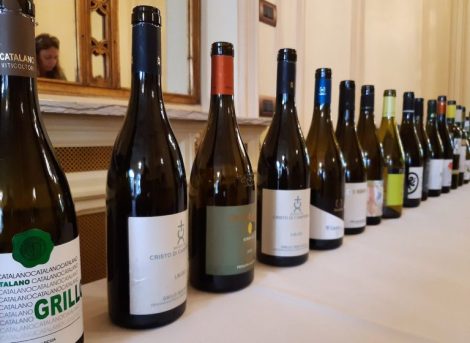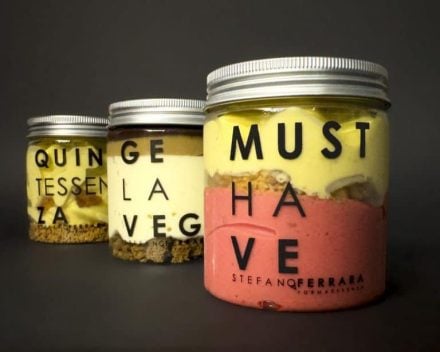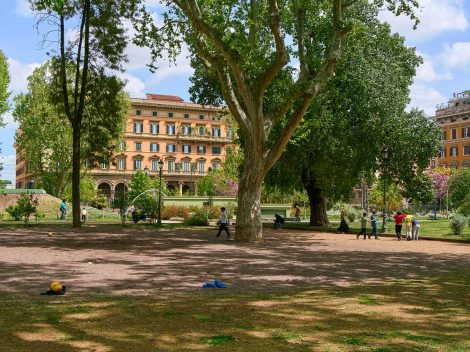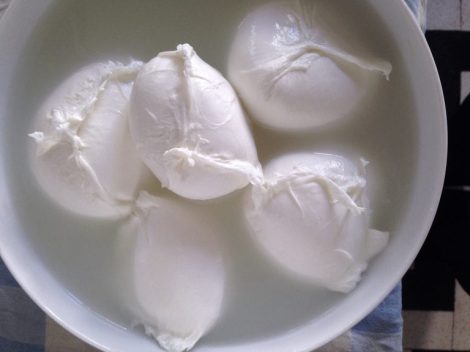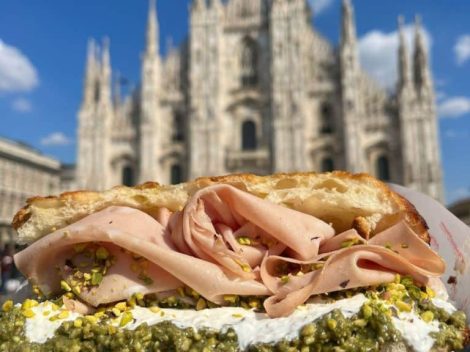10 traditional Italian biscuits
Nothing can represent the Italian pastry tradition like a biscuit. Since the Roman ages, when slices of bread cooked twice ("bis-cooked") were distributed to soldiers before the battles, biscuits have always played a special role for Italians. Perfect with a cup of espresso or sometimes dipped in a glass of sweet wine to round off meals on a high note, Italian cookies can be found in different versions according to the territory. Here are 10 specialties to try at least once.
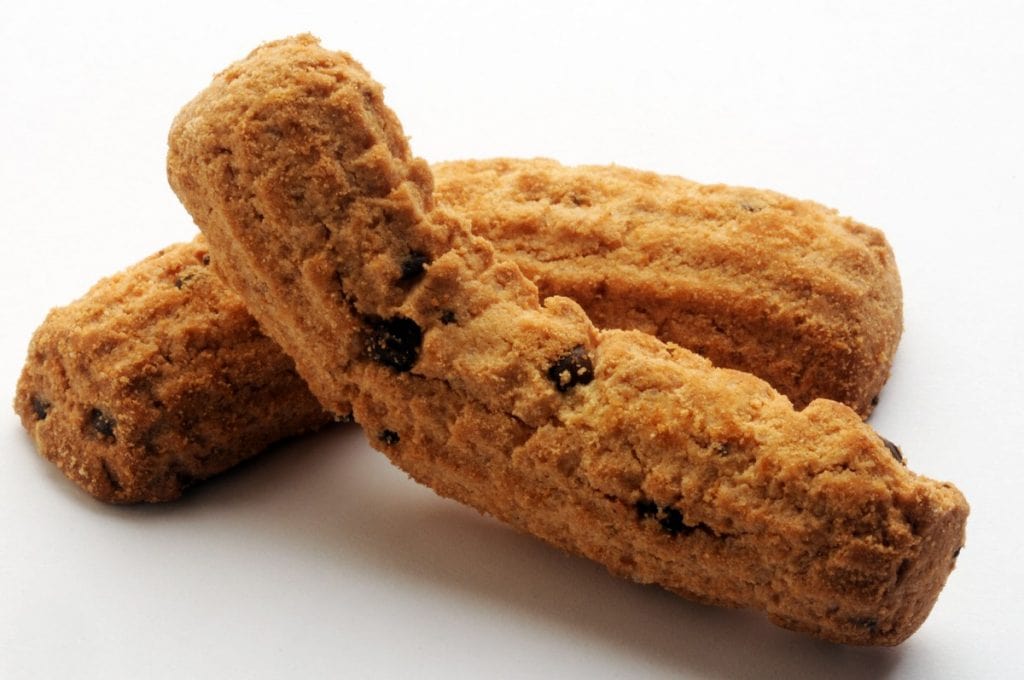
Krumiri
The history of the Monferrato Krumiri cookies dates back to 1870, when local pastry chef Domenico Rossi created the recipe, then officially dated in 1878. To get to the laboratory that still bakes the cookies that have made Casale famous all over the world, you can forget about Google Maps and rely only on your sense of smell. Their fragrance pervades the streets of the old town and leads us to Via Lanza 17, where you will often find customers waiting in line to enter the store. The recipe and the craft production have remained the same. Once the daily production is over, you just have to resign yourself and come back the next day. The “official” date of birth of krumiri biscuits coincides with the death of Italy’s first King, Victor Emanuel II, in 1878. Legend has it the shape of this popular cookie comes from the shape of the King’s royal moustache. The name, on the other hand draws from the word “crumiro”, a strikebreaker – which draws its origin from the Tunisian tribe of the Khumir made famous from the “Tunis slap” incident of 1881.
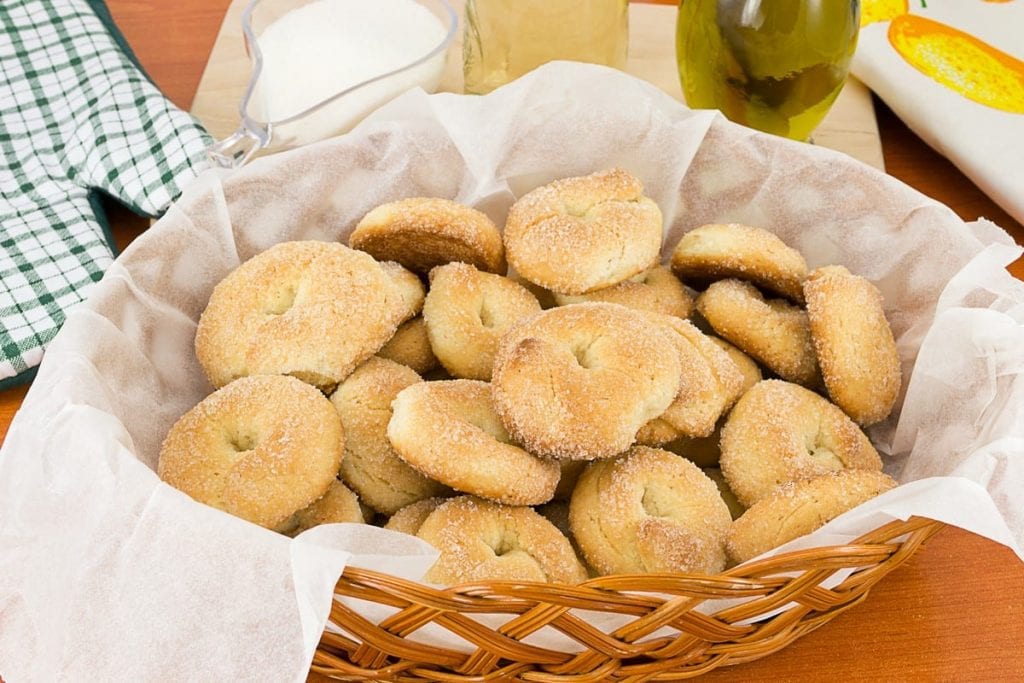
Wine cookies
Ring shaped cookie with wine are common to many regions of central Italy, in particular Lazio (especially the area of the Castelli Romani, where they are called ‘mbriachelle ie, tipsy), Abruzzo and Umbria. They are homemade flavoured donuts, always on the table at the end of the meal in traditional taverns and fraschette, accompanied by a glass of red wine. The ingredients are few, only four: flour, sugar, olive oil, wine.
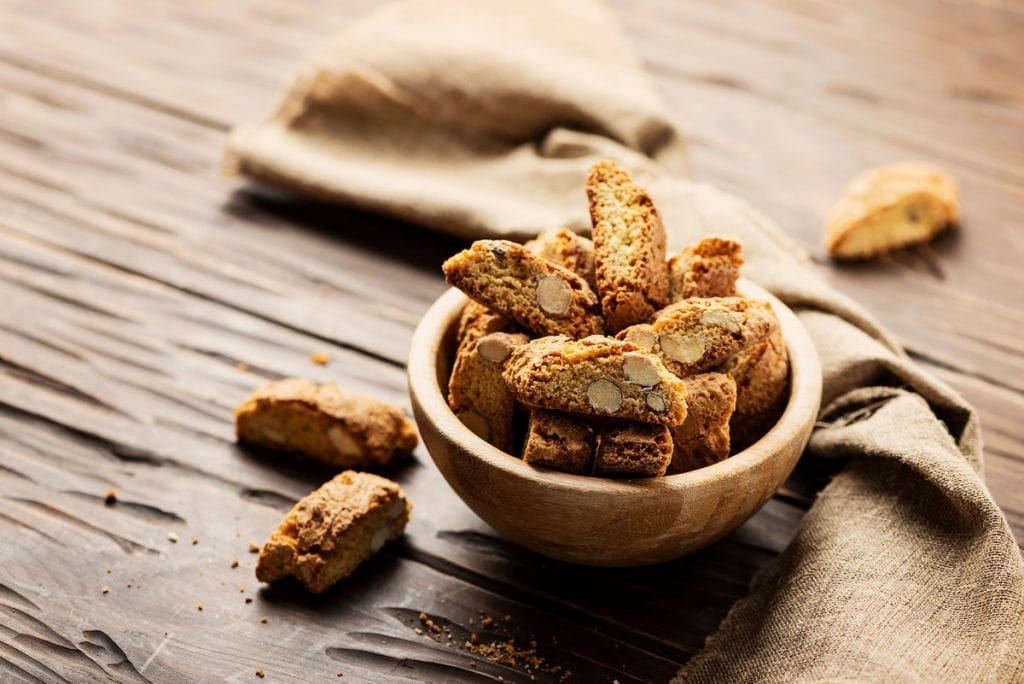
Cantucci
Cantucci are probably Tuscany’s most famous cookies. There is however a controversy regarding the name: are cantucci and biscotti di Prato the same thing? The answer is no, they are not the same thing, despite being very similar. Biscotti di Prato are made with a more basic recipe – flour, sugar, eggs, almonds and pine nuts – without any leavening agent not flavouring, while cantucci are far richer. The first documented recipe for cantucci, to this day conserved in the state archive in Prato, is contained in a manuscript by Baldanzi, a Prato intellectual of the XVIII century. The current recipe however is devised in the XIX century by Prato native baker Antonio Mattei, aka “il mattonella”. Both cantucci and biscotti di Prato, both boasting a rocky texture, are commonly eaten dipped in Vin Santo, typical Tuscan dessert wine. Cantucci are equally common in Umbria and Lazio where they are called “tozzetti.”
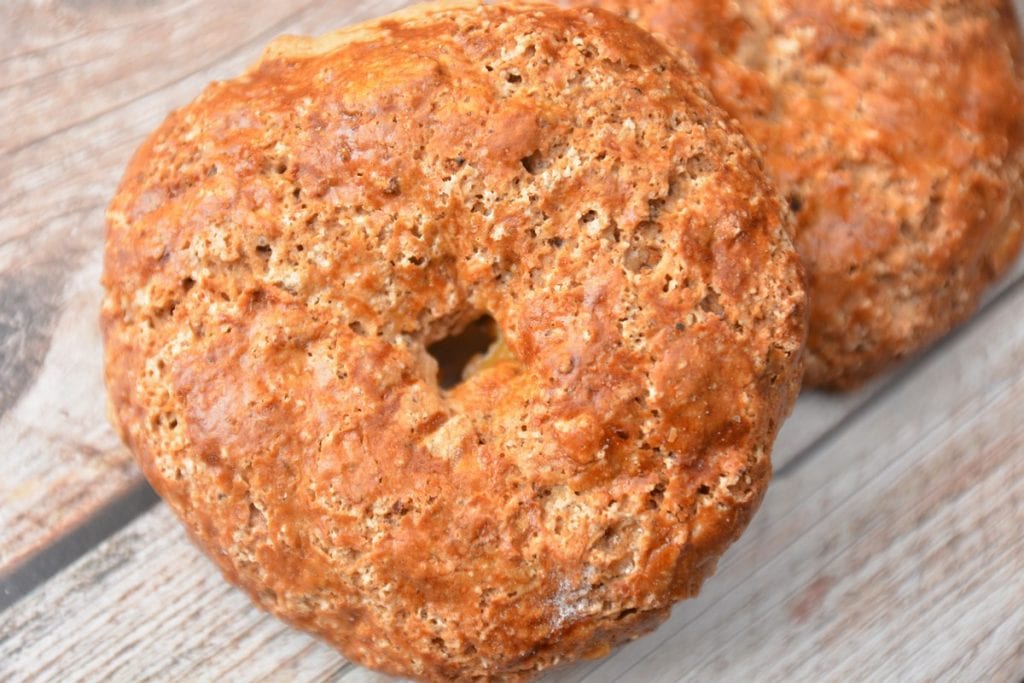
Roccocò
Many Italian desserts originated in convents, and roccocò are no exception: their recipe was first written down in 1320 at the Real Convento della Maddalena. The name derives from the French rocaille and underlines the rather baroque shape of the sweet, similar to a rounded shell. Here too, the main ingredient is pisto, a typical Neapolitan spice mixture together with almonds, flour, sugar and candied fruit.
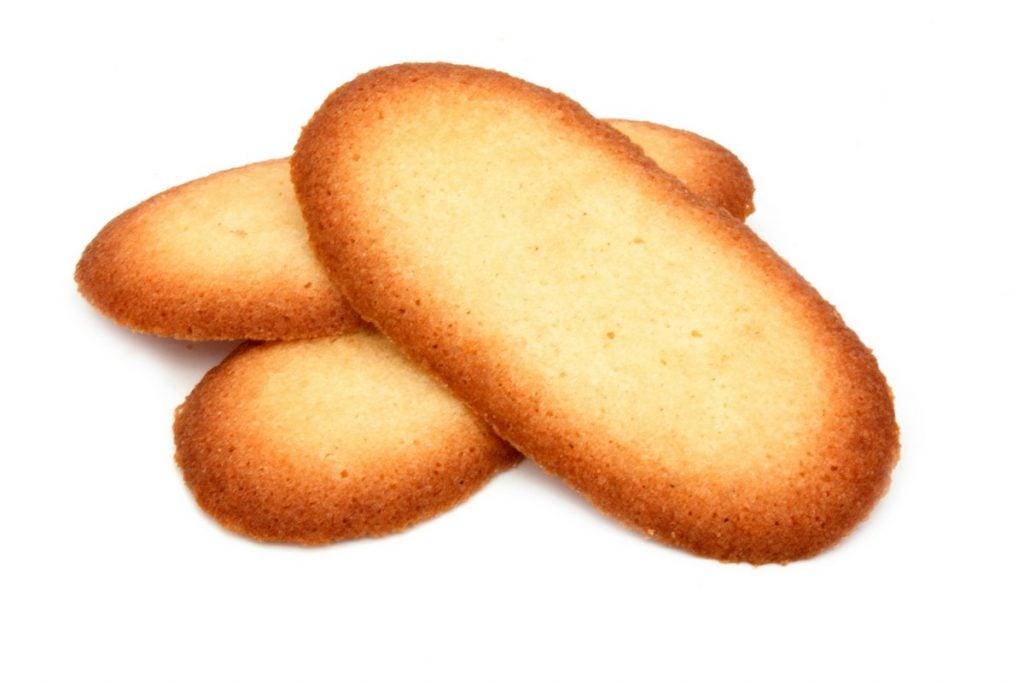
Lingue di gatto
The name literally means “cat’s tongue”: these are in fact oval-shaped cookies from Piemonte, although they are widespread throughout Italy and select European countries. Born in Paris in the Roaring Twenties by a fan of Charles Perrault, the author of the Puss in Boots fairy-tale (hence the name) the cookies reach Italy thanks to the connections of the Savoy family with French noble families. They are made with flour, softened buttercream, egg yolks and sugar.
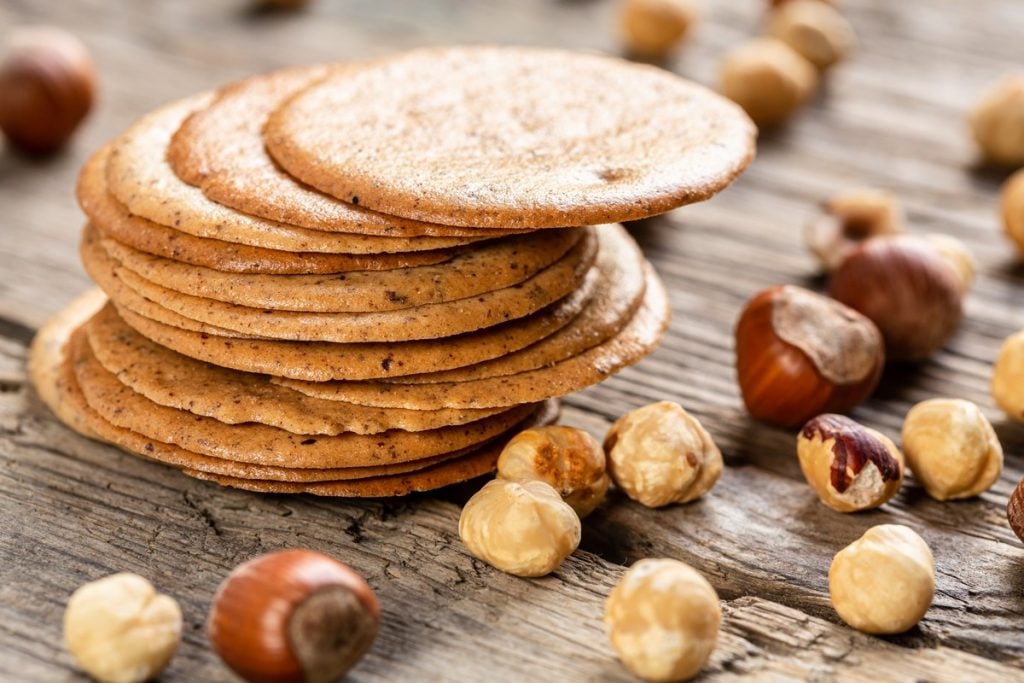
Tegole – Valle d'Aosta
Perfect with a cup of coffee or tea, tegole ("tiles") are the most popular desserts of the Valle d'Aosta region: their history is linked to the Boch family, pastry chefs for generations who, returning from Normandy in the 1930s, created these delights. In the beginning, the cookies had a wavy shape after baking, a characteristic that led to the creation of the name, but today they are almost always flat. They are prepared with 00 flour, sugar, white almonds, hazelnuts, butter and egg whites.
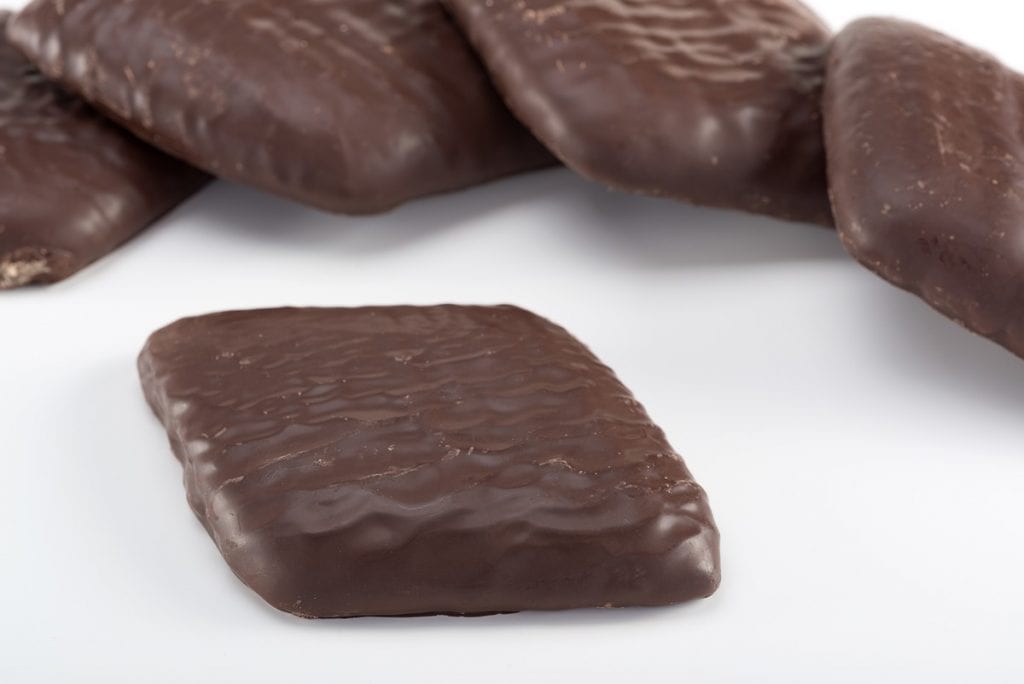
Mostaccioli
There is no recipe more widespread than mostaccioli, a speciality shared by Abruzzo, Molise, Basilicata, Umbria, Puglia and Calabria, that also has a Lombard variant, mostazzit, typical of Varese and of the neighbouring Canton of Ticino. Originally prepared on the occasion of the grape harvest, they were once made with bread dough, honey, almonds and grape must. Over the years, the recipe has changed a little bit and today consists of flour, sugar, honey, cocoa, cooked must, chopped almonds, water and baking soda that vary according to regional recipes. The name could derive either from the word mustum, must, or from mustace, laurel, whose leaves were used to wrap and protect an ancient preparation imported from Arab countries during the journey. They are now available all year round, yet remaining an unmissable treat at Christmastime.
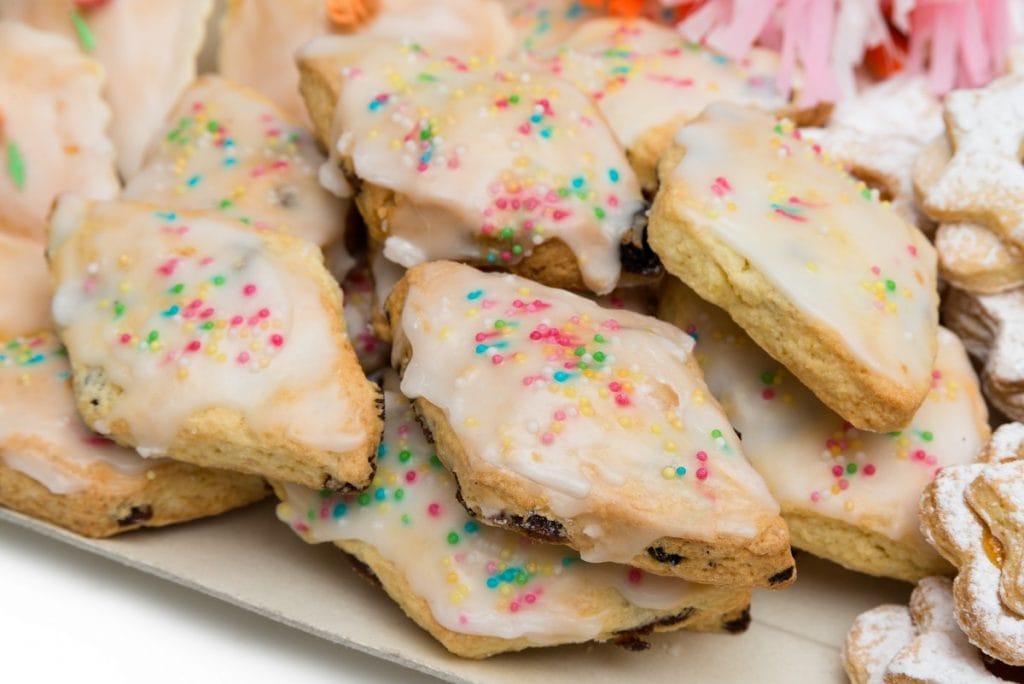
Pabassinas
Originally born to honour the feast of All Saints, pabassinas have long been eaten year round and are a must during a family lunch. These are shortcrust biscuits decorated with icing and enriched with raisins (pabassa in Sardinian language). Depending on the area, they are enriched with different ingredients such as sapa (concentrated grape syrup), cinnamon or aniseed liqueur. In any case, flour, almonds, walnuts, raisins, sugar, yeast, butter or lard, eggs, lemon and orange zest, and a pinch of salt are fundamental.
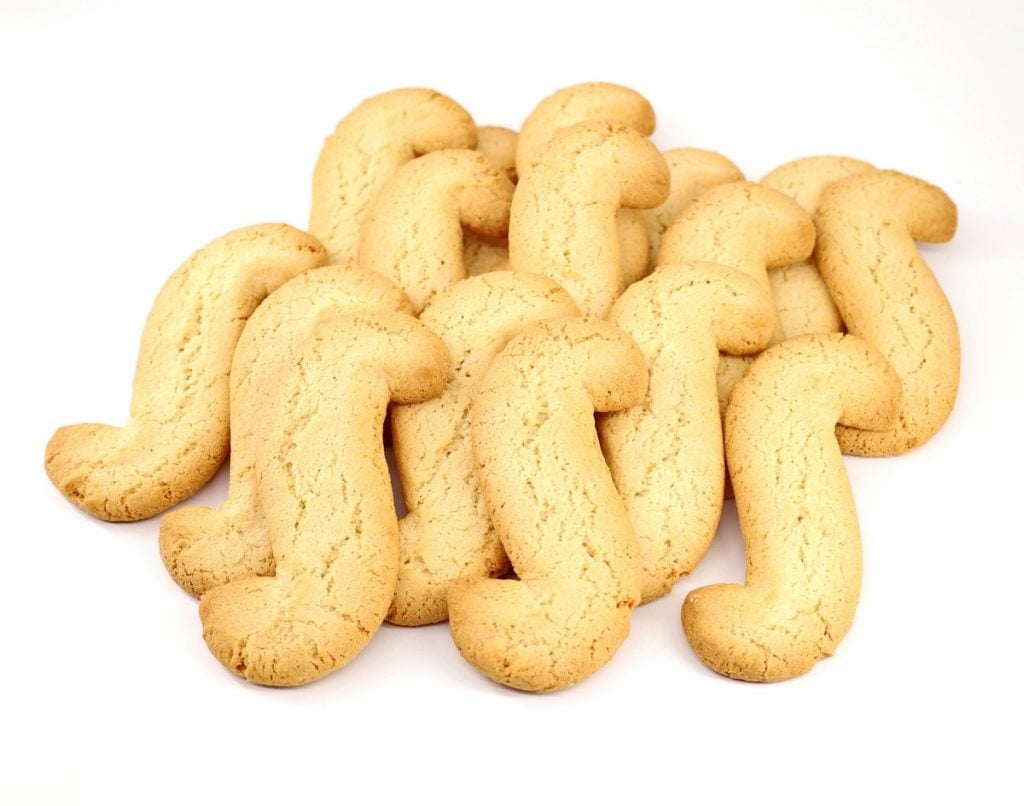
Esse di Raveo
These have become famous as "Pope John Paul II's cookies", because it is said that once he tasted those brought as a gift by a girl, he fell in love with them to the point of periodically ordering a pack. What is certain is that the Esse di Raveo, a small village at the foot of the Carnic Prealps, was invented by the local pastry chef Emilio Bonanni in 1930. A simple dessert that had an incredible success, so much so that it immediately became one of the traditional specialties of the area. Not only that: in the 1970s the laboratory created a production room entirely dedicated to the preparation of Esse! They are simple to make: all you need is flour, butter, eggs, yeast, vanilla and a pinch of salt.
Recipe for wine cookies
Ingredients
1 cup of red wine
1 cup of olive oil
1 cup of sugar (plus more for dusting)
Flour
In a mixing bowl add the wine with olive oil and sugar. Add some flour until the dough can be easily kneaded (around 500/520 grams). Give the biscuits a ring shape, cover each ring with some sugar and bake in the oven at 180°C for 20/25 minutes.
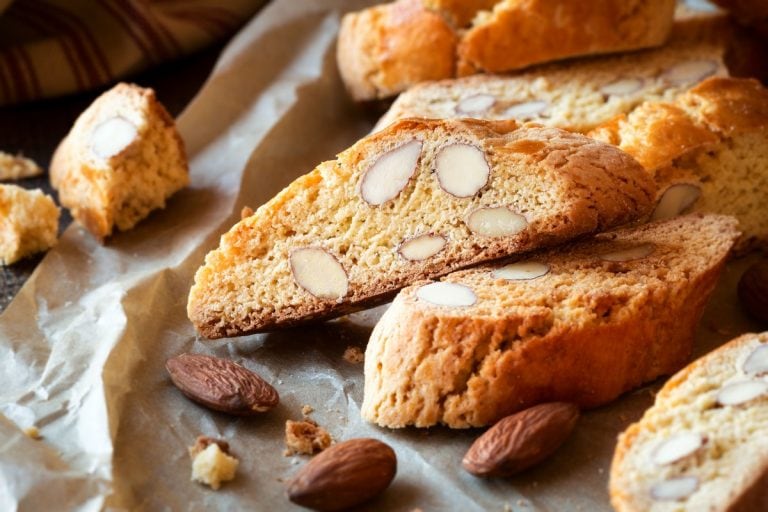
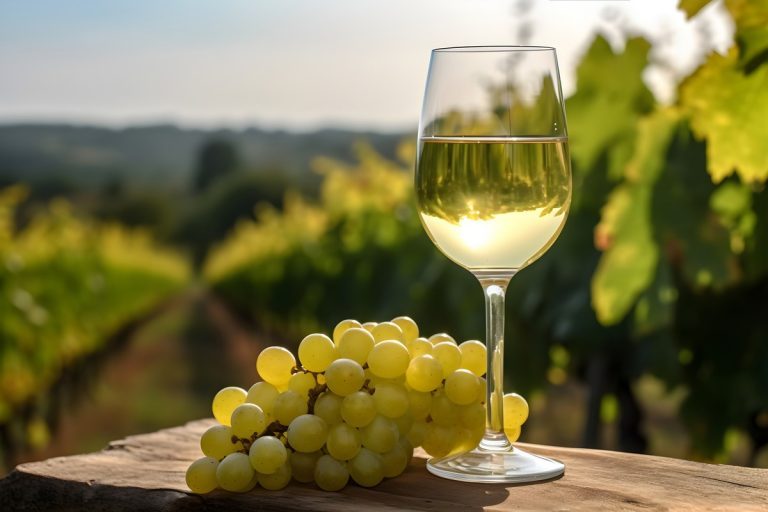 A Riesling from Oltrepò Pavese is the best quality-price ratio wine in Lombardy according to Gambero Rosso
A Riesling from Oltrepò Pavese is the best quality-price ratio wine in Lombardy according to Gambero Rosso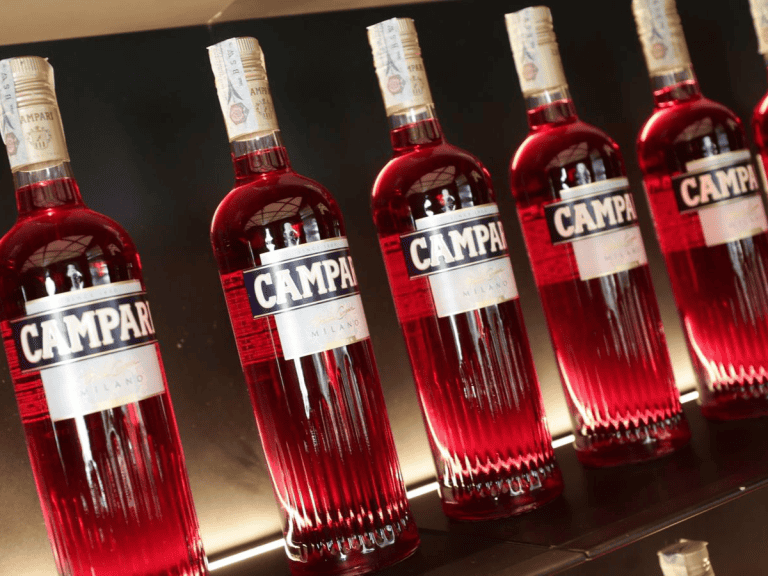 "The Campari recipe? It's a secret, only five people know it." Journey into the factory of the world's most famous red
"The Campari recipe? It's a secret, only five people know it." Journey into the factory of the world's most famous red 57 million bikers on vacation on farms, the Cycling Federation and Agriturist focus on cycle tourism
57 million bikers on vacation on farms, the Cycling Federation and Agriturist focus on cycle tourism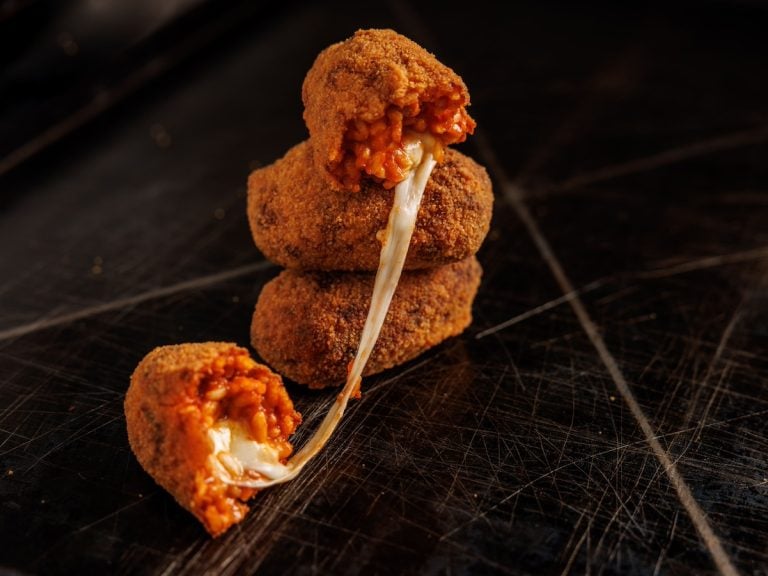 A new era for Casa del Supplì: opens a new location and considers franchising
A new era for Casa del Supplì: opens a new location and considers franchising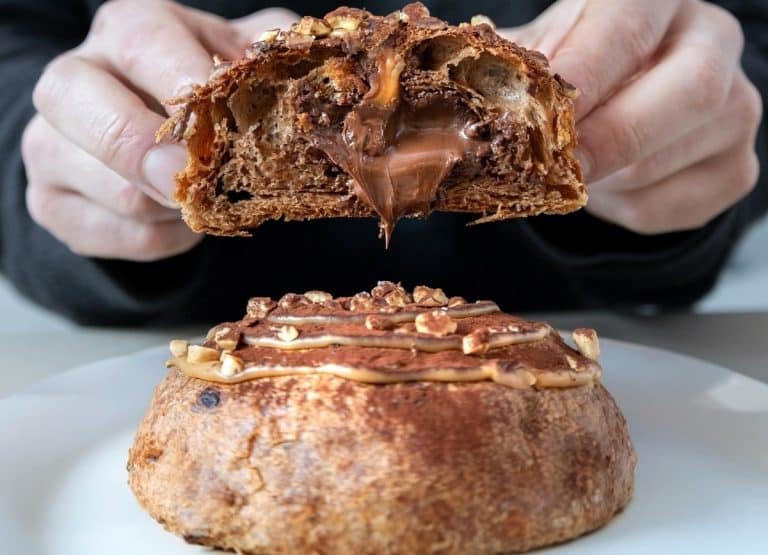 In Milan, a specialty café with gelato is opening near Bocconi University
In Milan, a specialty café with gelato is opening near Bocconi University